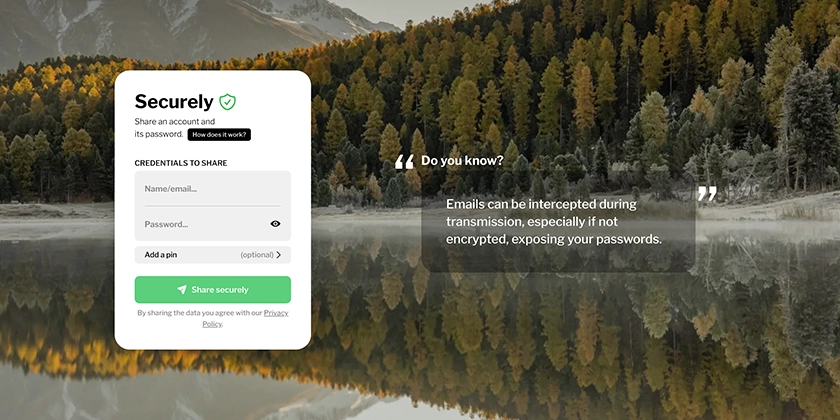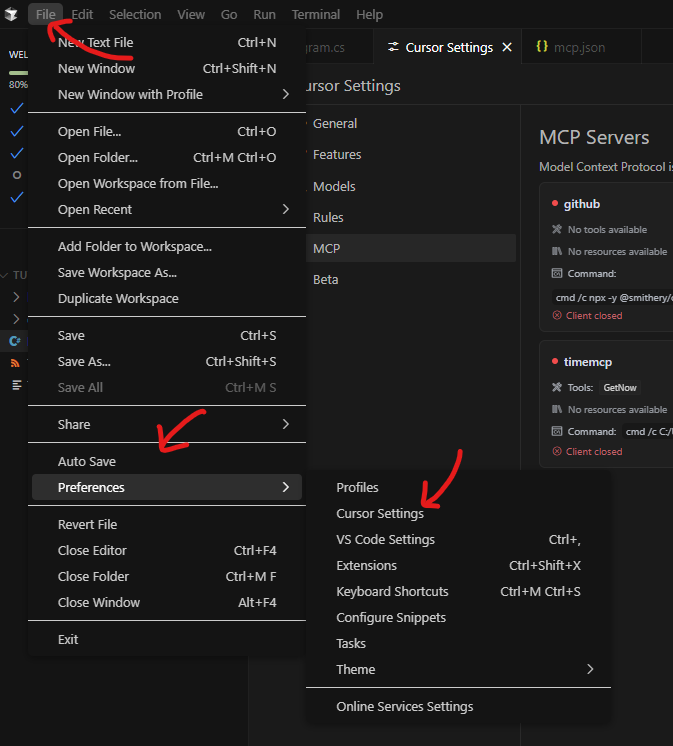And When We Thought We Had Seen It All… Here Comes the Right Dev Tool for Our Toolbox
The Developer's Dilemma: Passwords, Security, and Chaos Let's be honest: as developers, we've all been there. You're debugging an urgent issue, and suddenly—boom—someone pings you a password over Slack, plain text. Or worse, you get an email that starts with "Here are the credentials:" followed by a heart-stopping list of access keys, databases, and (probably) the WiFi password of the sender’s home network. We know it’s wrong. We know it's a bad practice. But we do it anyway, because who has time to set up proper secure channels when production is on fire? Enter SharePassword—the tool we didn’t know we needed, but now can’t ignore. SharePassword: The "WeTransfer" for Secrets SharePassword is like that friend who tells you to stop storing your API keys in config.js. It simplifies the secure sharing of sensitive information using advanced encryption, ensuring that even if a link falls into the wrong hands, it remains as useful as a floppy disk in 2025. Here’s the magic behind it: AES-256 encryption: Every password you share is encrypted with a 256-bit key, making it nearly impossible for anyone to decrypt it without authorization. (If someone does, they’re probably a time traveler.) Easy sharing: Generate a secure link with a single click, send it, and rest easy knowing it will self-destruct after use—just like those Mission: Impossible messages (but without the dramatic explosions). No storage of sensitive data: Even the platform’s developers couldn’t access your secrets if they tried. (No peeking temptations.) Why Does This Matter? (Or: "Why Should I Care?") Matteo Biasi, the mind behind SharePassword, had a wake-up call when he realized how often passwords were sent unprotected. If even tech-savvy people are doing it wrong, imagine the state of password sharing among non-developers. (Spoiler: it’s horrifying.) The philosophy here is simple: let’s not make security an afterthought. SharePassword isn’t just about making encryption accessible—it’s about nudging us toward better habits. If tools like this become part of our daily workflow, we’re one step closer to a world where “admin/admin” is no longer a valid login. The Academic Angle: Science Backs This Up Barbara Russo, a professor at the Free University of Bolzano, highlights how modern technology can recognize and authenticate users based on their behavior. We’re entering an era where security isn't just about strong passwords, but about how we interact with systems. SharePassword fits into this evolving landscape, ensuring that while we wait for the passwordless future, we at least share secrets responsibly. Final Thoughts: Put This in Your Dev Toolbox We developers love discovering the "right tool for the job." And while we have IDEs that autocomplete our code, frameworks that do the heavy lifting, and AI that helps us debug (or at least hallucinate solutions), we still lack common sense when it comes to security. So, next time you’re about to send a password over Slack, stop. Use SharePassword instead. Your future self (and your company’s security team) will thank you. What do you think? Have you ever received (or sent—be honest) passwords in a ridiculously insecure way? Share securely!

The Developer's Dilemma: Passwords, Security, and Chaos
Let's be honest: as developers, we've all been there. You're debugging an urgent issue, and suddenly—boom—someone pings you a password over Slack, plain text. Or worse, you get an email that starts with "Here are the credentials:" followed by a heart-stopping list of access keys, databases, and (probably) the WiFi password of the sender’s home network.
We know it’s wrong. We know it's a bad practice. But we do it anyway, because who has time to set up proper secure channels when production is on fire?
Enter SharePassword—the tool we didn’t know we needed, but now can’t ignore.
SharePassword: The "WeTransfer" for Secrets
SharePassword is like that friend who tells you to stop storing your API keys in config.js. It simplifies the secure sharing of sensitive information using advanced encryption, ensuring that even if a link falls into the wrong hands, it remains as useful as a floppy disk in 2025.
Here’s the magic behind it:
AES-256 encryption: Every password you share is encrypted with a 256-bit key, making it nearly impossible for anyone to decrypt it without authorization. (If someone does, they’re probably a time traveler.)
Easy sharing: Generate a secure link with a single click, send it, and rest easy knowing it will self-destruct after use—just like those Mission: Impossible messages (but without the dramatic explosions).
No storage of sensitive data: Even the platform’s developers couldn’t access your secrets if they tried. (No peeking temptations.)
Why Does This Matter? (Or: "Why Should I Care?")
Matteo Biasi, the mind behind SharePassword, had a wake-up call when he realized how often passwords were sent unprotected. If even tech-savvy people are doing it wrong, imagine the state of password sharing among non-developers. (Spoiler: it’s horrifying.)
The philosophy here is simple: let’s not make security an afterthought. SharePassword isn’t just about making encryption accessible—it’s about nudging us toward better habits. If tools like this become part of our daily workflow, we’re one step closer to a world where “admin/admin” is no longer a valid login.
The Academic Angle: Science Backs This Up
Barbara Russo, a professor at the Free University of Bolzano, highlights how modern technology can recognize and authenticate users based on their behavior. We’re entering an era where security isn't just about strong passwords, but about how we interact with systems. SharePassword fits into this evolving landscape, ensuring that while we wait for the passwordless future, we at least share secrets responsibly.
Final Thoughts: Put This in Your Dev Toolbox
We developers love discovering the "right tool for the job." And while we have IDEs that autocomplete our code, frameworks that do the heavy lifting, and AI that helps us debug (or at least hallucinate solutions), we still lack common sense when it comes to security.
So, next time you’re about to send a password over Slack, stop. Use SharePassword instead. Your future self (and your company’s security team) will thank you.
What do you think? Have you ever received (or sent—be honest) passwords in a ridiculously insecure way?
Share securely!











































































































































































![[The AI Show Episode 142]: ChatGPT’s New Image Generator, Studio Ghibli Craze and Backlash, Gemini 2.5, OpenAI Academy, 4o Updates, Vibe Marketing & xAI Acquires X](https://www.marketingaiinstitute.com/hubfs/ep%20142%20cover.png)




























































































































![[DEALS] The Premium Learn to Code Certification Bundle (97% off) & Other Deals Up To 98% Off – Offers End Soon!](https://www.javacodegeeks.com/wp-content/uploads/2012/12/jcg-logo.jpg)


![From drop-out to software architect with Jason Lengstorf [Podcast #167]](https://cdn.hashnode.com/res/hashnode/image/upload/v1743796461357/f3d19cd7-e6f5-4d7c-8bfc-eb974bc8da68.png?#)








































































































.png?#)

































_Christophe_Coat_Alamy.jpg?#)
 (1).webp?#)





































































































![Apple Considers Delaying Smart Home Hub Until 2026 [Gurman]](https://www.iclarified.com/images/news/96946/96946/96946-640.jpg)
![iPhone 17 Pro Won't Feature Two-Toned Back [Gurman]](https://www.iclarified.com/images/news/96944/96944/96944-640.jpg)
![Tariffs Threaten Apple's $999 iPhone Price Point in the U.S. [Gurman]](https://www.iclarified.com/images/news/96943/96943/96943-640.jpg)




































































































































